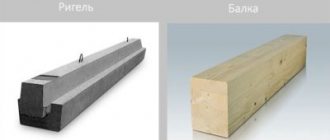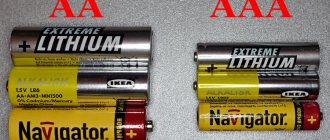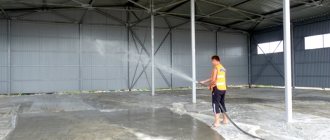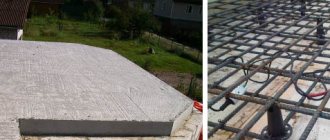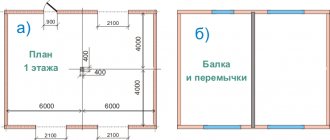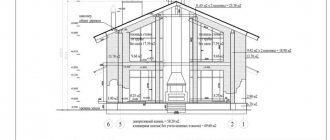Before starting construction work, it is necessary to select and order material of a suitable brand.
At this stage you often have to choose between concrete mix on granite or gravel.
The most obvious difference between fillers is their price: crushed gravel concrete is cheaper.
However, this does not mean that it is worse in terms of basic characteristics. So that you can make the right choice, we suggest comparing building materials according to the main criteria.
Concrete on gravel - advantages and disadvantages
Gravel (river gravel is most often used in the production of concrete mixtures) is stones with a grain size of 5-20 mm.
Properties of heavy concrete M350 on river gravel:
- strength class B25;
- average strength 32.11 MPa;
- frost resistance F150-F200;
- waterproof class W8;
- level of mobility P2-P4.
Scope of application:
- laying the foundation and preparatory work in industrial and private construction;
- production of concrete products of various configurations;
- pouring concrete surfaces for airports;
- preparing the bowl for arranging swimming pools.
The main advantages of this building material:
| Disadvantages of a solution on crushed gravel:
|
Comparative analysis: pros and cons.
For an ignorant person, there are no special differences between crushed stone and gravel filling of concrete solutions, because both materials are functionally comparable in application. These materials are similar in structure and are obtained from mountain mineral deposits. But in reality, there are differences between them that are taken into account in the production technology of reinforced concrete products.
The main difference is in appearance. Gravel has a smooth surface, and crushed stone with unevenness and angularity has large fractional sizes, which gives the most reliable adhesion in concrete mixtures and, accordingly, provides an advantage in the manufacture of special structures (beams, slabs, columns, etc.).
Filling with granite crushed stone is suitable for the production of building foundations with various sizes. But due to the higher market price, it is not so in demand among developers of small housing constructions. When pouring foundations for simple low-rise houses, you can safely use a mixture of gravel with sand and cement to fill the concrete mortar, which can provide the required quality to such construction projects.
The cheapest and least durable option in the production of concrete mixtures is the use of limestone crushed stone, which is limited to use only in small buildings, for pouring the foundations of gazebos, garages and other utility facilities.
Concrete on granite - pros and cons
Granite crushed stone creates a stable skeleton in reinforced concrete products.
This increases the strength and durability of the finished product.
Granite filler is obtained by crushing rocks. This is more expensive than sifting river stone fractions when extracting gravel, so the cost of concrete on granite is higher.
The characteristics of the building material depend on the size of the crushed stone, which gives:
- two levels of strength (grade 800-1200 - standard strength, grade 1400-1600 - increased strength);
- frost resistance up to F400;
- flakiness (content of undesirable lamellar and needle-shaped crushed stone grains) 5-23%.
Advantages
With this material you can safely build a house or fill the floors of a bridge - the quality of the finished product will not disappoint you. | Disadvantages of this building material
For the preparation of concrete mixtures, we use only granite with a radiation level corresponding to safety class I. |
What is better - concrete on gravel or crushed stone?
For the production of durable concrete that ensures a monolithic structure, crushed stone is suitable according to its technical parameters. The material, made from dense rocks, has an optimal cubic shape, can withstand high loads, is frost-resistant, is distributed evenly, which saves mortar, uneven edges contribute to the best adhesion to the cementitious composition.
What to choose?
It all depends on the goals that the builder sets for himself. For arranging the foundation for a private house no higher than two floors, concrete on gravel is quite suitable. If the operation will take place under conditions of increased loads (industrial construction, high humidity, sudden temperature changes), it makes sense to order more expensive concrete on granite crushed stone.
BSU-1 specialists are ready to help you choose the best option taking into account the characteristics of the facility and ensure delivery of the material on time directly to the pouring site. Phone numbers for accepting applications are indicated in the header of the site.
What is gravel and crushed stone?
- Crushed stone is obtained by crushing rocks. Crushed stone can be of different sizes and shapes - based on these parameters, separate fractions are distinguished. Medium diameter material is used for the production of concrete, small diameter is used for sprinkling sports fields, and large diameter is used in landscape design.
- Gravel is a product of natural rock destruction. Its characteristic feature is a smooth surface, as well as the presence of impurities in the form of sand or soil. It is these factors that negatively affect the adhesion of the material to concrete.
NOTE! Gravel can be mountain, sea or river, but mountain gravel is used in construction. Other types of material are used in landscape design to decorate the territory.
Crushed gravel as a filler for concrete mixtures
High-quality crushed gravel is consistently highly popular among representatives of the construction industry. To obtain large fractions of non-metallic material, solid rock is crushed. Small fractions are the result of sifting the crushed rock.
The advantages of crushed gravel include:
- Good indicators of strength and frost resistance.
- There is no unwanted background radiation.
- There are no harmful impurities.
- Affordable cost of material.
Among the disadvantages of crushed gravel, it is worth noting that it is less durable than its granite “brother”. Therefore, if you need high-strength concrete of the M350 B25 grade, crushed gravel is absolutely not suitable as a filler.
Concrete on gravel is used in the construction of roads, the manufacture of reinforced concrete structures, the creation of blind areas, as well as the pouring of monolithic and strip foundations.
Granite crushed stone as a filler for concrete mixtures
Durable granite crushed stone is also obtained by crushing rock: the rock is undermined, after which the block is crushed into smaller particles, and the resulting material is sieved to separate into fractions.
Among the advantages of the material:
- Maximum strength (grade up to 1600)
- Suitable for high grade concrete.
- It has a low degree of flakiness.
The disadvantages of granite crushed stone include high cost and cases of exceeding permissible radiation field standards. If representatives of the construction industry have to put up with the first drawback, then they can protect themselves from purchasing building materials that are dangerous from the point of view of radiation.
Suppliers that have been on the market for a long time and have proven themselves well among a wide range of customers will not spoil their reputation by trying to sell crushed stone of dubious origin.
Concrete with granite filling is used to provide a wide range of construction and repair tasks - from the formation of “pillows” during road construction to multi-story monolithic buildings.
The main differences between gravel and granite crushed stone
To summarize, we note several important differences between gravel and crushed granite:
- The cost of crushed gravel is lower than that of granite; accordingly, the ready-mix concrete will also cost less.
- Crushed gravel is noticeably inferior to granite in terms of strength, which limits its scope of application in the construction industry.
- In some cases, granite crushed stone is characterized by increased background radiation. Such undesirable properties are not observed in crushed gravel.
We supply concrete mixtures and other building materials directly from the manufacturer, which is a guarantee of decent product quality and low prices. To evaluate the benefits of cooperation, we suggest that you familiarize yourself with the current price list:
| Heavy concrete (gravel) | Heavy concrete (granite) | ||||
| Name | price, rub. per 1 m 3 without PMD | price, rub. per 1 m 3 without PMD | PMD, rub. | ||
| Concrete M-100 | 3203 | Buy | 3802 | Buy | 100 |
| Concrete M-150 | 3351 | Buy | 3913 | Buy | 100 |
| Concrete M-200 | 3405 | Buy | 4050 | Buy | 100 |
| Concrete M-250 | 3604 | Buy | 4150 | Buy | 150 |
| Concrete M-300 | 3702 | Buy | 4352 | Buy | 150 |
| Concrete M-350 | 3804 | Buy | 4351 | Buy | 150 |
| Concrete M-400 | 4000 | 4552 | Buy | 200 | |
| Concrete M-450 | – | 4754 | Buy | 200 | |
| Concrete M-550 | – | 5000 | Buy | 200 |
Contacting is your opportunity to save on the purchase of crushed stone without compromising the quality of the final result. Prompt delivery of building materials throughout Moscow and to nearby cities of the Moscow region is carried out using special equipment from the company’s own fleet.
What is better to choose for concrete: gravel or crushed stone?
The production of concrete involves the use of a number of components that affect its technical and operational characteristics. Fillers play an important role in this. In order to answer the question of what is better to use for preparing concrete mortar – crushed stone or gravel, you need to analyze and compare their properties.
Comparative analysis: pros and cons
The most important characteristics of a concrete mixture are strength, frost resistance, and water resistance. Depending on the purpose, indicators of the economic feasibility of choosing certain components also play an important role. Let’s compare how crushed stone and gravel meet these requirements.
Crushed stone.
Crushed stone is a solid bulk material of non-metallic origin with a granular structure, which is obtained as a result of mechanical crushing of granite rock or other mountain deposits. The size of the structural unit varies from a minimum of 5 mm to 70 mm. Anything larger is a rubble stone. According to its technical characteristics, granite crushed stone is the most suitable filler for dense, heavy, high-quality concrete. Among its advantages:
- the highest strength indicators (from 800 to 1600);
- low level of flakiness (no more than 20%);
- frost resistance;
- cubic grain shape with a rough surface, which provides excellent adhesion to the cementitious substance.
The disadvantages of crushed granite include:
- high cost;
- more pronounced radioactive background compared to other similar raw materials.
The quality of such crushed stone is beyond doubt
Gravel.
The use of this term is not entirely correct, since in this context we can talk about crushed gravel and natural gravel, which, despite a similar picture of origin, are different materials.
River or sea gravel are multi-colored rounded spherical pebbles ranging in size from 5 to 70 mm. It is not suitable for concrete due to its smooth structure - it does not adhere well to cement-sand mortar. Gravel is used mainly for decorative purposes - for the design of artificial reservoirs, alpine slides, and other landscape design objects.
To prepare concrete, crushed crushed gravel is used, which is produced by crushing rocky boulders and sifting sedimentary rocks. Unlike its river counterpart, it consists of grains of irregular angular shape with rough walls.
The advantages of crushed gravel include:
- low level of radioactivity, which almost never exceeds 370 Bq/kg, which corresponds to class I;
- favorable price;
- it is easier to prepare concrete manually.
Its disadvantages can be considered:
- lower strength compared to its granite counterpart;
- presence of clay and organic impurities in the composition;
- a higher percentage of flat particles (flakiness).
Gravel building material is indispensable for concreting road surfaces and in low-rise housing construction
How to choose the right filler?
When choosing components for a concrete mixture, several factors are taken into account.
Firstly, the purpose of the concrete is taken into account. If it is preferable to use granite crushed stone for pouring the foundation of a two-story mansion, then it is not economically feasible to use expensive material for concreting support columns or a garden path; gravel will also do. Professional builders believe that granite crushed stone is necessary as a component if, according to GOST, concrete M300 and higher is required for certain work.
Secondly, faction is of no small importance. For concrete, the most suitable filler size is 5–20 mm. Larger pieces will fill the mixture unevenly and thus deteriorate its properties.
Experienced experts recommend using granite ordinary continuous aggregate by mixing two fractions to obtain high-strength concrete grades. Grains ranging from 5 to 40 mm are closely adjacent to each other, improving the quality of the finished product.
Thirdly, be sure to pay attention to flakiness. Cubic crushed stone with a small content of flat stones (5–10%) is better compacted, so concrete with it is stronger. Products with a large number of flakier particles have drainage capabilities and are suitable for concreting platforms and paths.
Let's sum it up
- To prepare concrete, we use crushed granite or crushed gravel. We leave the gravel for landscaping.
- In concrete mixtures of grade 250 and below, feel free to put gravel material, 300 and above - granite.
- Concrete M400 and M500, which are common in the construction of buildings and structures, require a filler with a strength of at least M1200.
Source: https://zen.yandex.ru/media/id/5afd616c55876bc71b5c9077/chto-luchshe-vybrat-dlia-betona-gravii-ili-sceben-5b73eee78b9f0300a9137ba6

